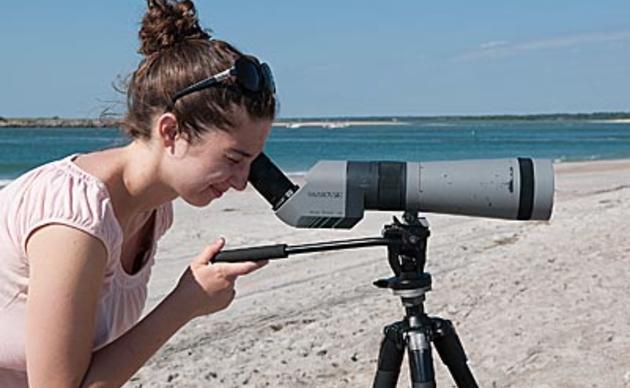Winston-Salem Journal: Birds are sensitive to surroundings
The article by Phil Dickinson originally appeared in the Winston-Salem Journal.
If your neighborhood changed, would you adjust or move?
If you relocated for a job, would your family adapt to new surroundings?
What would you do if your home were destroyed during a hurricane?
Most birds are more sensitive to their surroundings than humans. If conditions change and if their food or homes disappear they could perish.
Many bird species rely on specific habitats and food sources to achieve breeding success. Some birds require forests and the nuts or insects that are available there. Some birds require open spaces to hunt small animals. Still others require water to find fish, snails or small crustaceans. Some birds adapt to change — doves, starlings, robins, for example.
But many experience difficulties. Their breeding ranges diminish and their numbers drop.
Last month, the National Audubon Society issued a seven-year study on “Birds and Climate Change.” The news is not good. Based on where scientists think our North American climate is headed, over half of our bird species are at risk over the next 65 years — 314 of 588 to be precise.
The Audubon report looked at 40 years of data from Christmas bird counts and U.S. Geological bird surveys. From this data, scientists defined “climatic suitability” for each bird species — temperature ranges, precipitation and seasonal changes the birds need to survive. Then they mapped where each species’ climatic range may be found based on predicted future changes.
The conclusion was that 126 of the species at risk will lose over half their current climatic range by 2050. The other 188 are likely to lose it by 2080. The study covered 49 states and Canada. Many of our birds winter in Central or South America. There was not sufficient data to report on those areas, so even more species may be at risk.
We are familiar with many of these species in North Carolina. Our national symbol, the bald eagle, is on the list. So are the osprey and American oystercatcher we enjoy watching at the beach. Three other North Carolina species at risk are the golden-winged warbler, the brown-headed nuthatch and the wood thrush. Forsyth Audubon has been working to help these species.
The golden-winged warbler breeds in Ashe and Watauga counties at elevations below 4,000 feet. Numbers for this beautiful bird are already declining. Working with Curtis Smalling, an Audubon North Carolina biologist, Forsyth Audubon members have surveyed likely breeding areas. With rising temperatures, the climatic range for golden-winged may move higher. Smalling is working with local landowners to conserve suitable habitat at higher elevations.
Brown-headed nuthatches live in native pines throughout the Piedmont. Popular because of its small size and squeaky voice, it is the logo for Forsyth Audubon. The nuthatch is losing habitat due to logging and development. Their habitat is also endangered by extreme weather associated with climate change, like ice storms and hurricanes. Last year, the chapter placed 80 boxes in local parks for nuthatch use.
This year, Forsyth Audubon initiated a project that attached GPS locators to 22 wood thrushes. The plan is to recapture the birds next year to learn where they went. One side effect of climate change is an increase in invasive exotic plants. Wood thrushes and other forest wildlife are sensitive to these alterations. Using GPS data, conservation efforts can target locations where the birds nest in summer, live in winter or rest during migration.
There are things you can do to help the birds. Buy a nuthatch box at Wild Birds Unlimited or Wright’s Backyard Birding Center. Use native plants in your yard. Contribute time or money to a land conservation group. Urge your community and elected officials to take steps to control greenhouse gas emissions and promote clean energy.
To read more about the Audubon report, visit http://climate.audubon.org. Keep tabs on what Audubon North Carolina is doing on Facebook and at http://nc.audubon.org.
u On Oct. 11, the Forsyth Audubon Second Saturday Bird Walk will visit the Historic Bethabara greenway. Meet at 8 a.m. behind the Visitor’s Center. For more information, send email to Bill Gifford at bill@martingiffordlaw.com.
Bird’s-Eye View is a joint column by Ron Morris and Phil Dickinson. If you have a birding question or story idea, write to Bird’s-Eye View in care of Features, Winston-Salem Journal, P.O. Box 3159, Winston-Salem, N.C. 27101-3159, or send an email tobirding@wsjournal.com. Please type “birds” in the subject line.
How you can help, right now
Donate to Audubon
Help secure the future for birds at risk from climate change, habitat loss and other threats. Your support will power our science, education, advocacy and on-the-ground conservation efforts.
Sign Up For Our eNewsletter
Keep up-to-date on all that happens with Audubon North Carolina's research, events and volunteer opportunities.




